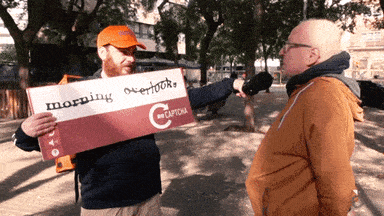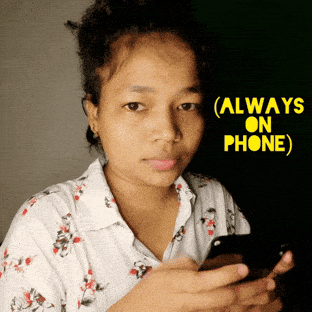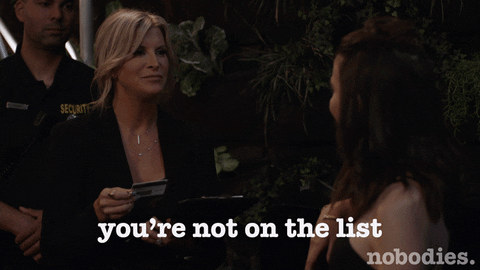- The Ladder
- Posts
- It's Hard To Say No to Free
It's Hard To Say No to Free
🦉 How Duolingo Roasted TikTok And Grew To 600 Million Users 🤳

👋 Hello fellow Ladderers (is that a word?)
Thank you and welcome to our newbies who joined over the last few days. This week we’re coming back to the concept of languages inspired by some reader replies.
If you missed last week’s edition on how to work with less using the insights from “Inside The Box”, you can catch-up here ⏪
This week:
I hope you enjoy.
Hello darkness my old friend,


If you were sent The Ladder by some legend, click below to subscribe. And give them a hug from me 🤗
Frustration Drives Innovation.
⏱️ ~ 8 minutes 43 seconds read
A couple of weeks ago I shared the story of my wife Virginia and I attempting to learn, and subsequently being torched for our terrible, french.
Learning a language is incredibly tough - particularly as you get older.
A few people responded asking if we had used Duolingo before setting off on our trip. Sadly that particular trip was pre-Duolingo (and smartphone maps 🗺️ 😥), but I have since used the app and it’s an extraordinary experience - that just plain works.
That got me thinking about Duolingo, the amazing story of their rise to become the leader in their category and how their innovative use of gamification techniques, social media and unique business model has gotten them to where they are today.
So I thought today we could take a look at this journey and see what lessons we can take away to inject into our own marketing.
So I guess we’re doing case studies now 🦾 🙂
FROM LITTLE THINGS, BIG THINGS.. GRANDIR 🌱
Duolingo has very humble beginnings, as does its founder Luis von Ahn.
Hailing from Guatemala, he recognized the transformative power of language learning early on. Learning English, thanks to his single mother ploughing all her money into his education, led to him securing a scholarship at Duke University, and later contributing to Google and the now famous CAPTCHA tool. His journey demonstrated to him the stark disparities in opportunity for those who learn english and those that do not.

IRL frustration
At any given time around 1.2 billion (yes, with a ‘b’) people are learning another language, that’s a huge market. And in 2011, most were locked out of learning another language as the only options at the time were expensive tutoring/ classes, clunky and expensive online tools like Rosetta Stone, or ineffective (and frankly un-fun) audio training formats.
Spotting a huge and desperately needed opportunity, the next question was, how to bring language to so many people. Luis had a distribution problem. The solution was smartphone apps.
Since the iPhone’s release in 2007, smartphone adoption went utterly bonkers. And for better or for worse, the vast majority of the world’s population by 2011 already had a bonafide distraction machine in their pocket.

The idea of Duolingo was born - langage education would be free and accessible to all.
OK, we all know a great idea on its own does not add 9 zeros to one’s bank account. If it did, I suspect you and I both would be in very different places in life.
For a start, Luis and the team are extremely smart - they developed an app that was fundamentally about creating a daily habit, learning practical skills straight out of the gate and making the entire experience fun and social. An absolutely phenomenal, and effective shift in how people learn languages.
So let’s take a look at some of the key marketing and user experience elements that built Duolingo into the $9.7B behemoth it is today. And importantly what you can take from it to integrate into your own work.
ARE YOU ON THE LIST? 📋
Every app ever born started with 0 users.
The first task is to get off zero at a cracking pace, and show you have a ravenous audience frothing to get onto your platform. The best way to do this, and the darling tactic of all tech start-ups is the waitlist.

The fear is real
Luis and the team were very clever in building up the waitlist for Duolingo to an impressive 300,000 users ahead of its public release June 2012, using the following methods:
Strategic Use of Public Relations (PR): Luis von Ahn presented a hugely popular TED talk in 2011 introducing the idea behind Duolingo to a broad audience, generating buzz and interest. Leveraging his credibility and reputation in tech, he then went on to present the idea at high-profile tech events and effectively leveraged media outlets to talk about their unique approach to language learning.
Private Beta and Invitation-Only Model: By launching as an invitation-only private beta, Duolingo created a sense of exclusivity and urgency. People who were interested in the platform had to sign up for a waitlist, which naturally grew as more people learned about it and wanted to join. FOMO and social proof exploited to perfection.
Feedback Loop and Iteration: During the private beta phase, Duolingo closely monitored user feedback and iteratively improved the product. This helped in refining the platform, making it more appealing to the beta users, building wonderful word of mouth and generating more referrals as happy users invited their friends to the waitlist.
Viral and Social Mechanics: Even in the private beta phase, Duolingo incorporated features that encouraged sharing and virality. For example, users could share their progress on social media, invite friends to join the platform, and compete with them. This not only helped in retaining users but also in acquiring new ones through word-of-mouth.
Engagement with the Language Learning Community: Before the full public launch, Duolingo engaged with language learning forums, blogs, and communities to spread the word about their platform. They targeted the audience that would be most interested and likely to spread the word about Duolingo.
Pretty clever stuff, but none of the above would have worked were it not for the groundbreaking offer that Luis and the team put together.
As mentioned, the language learning options available at the time were pretty dire. The online giant in the space at the time was Rosetta Stone. An online learning slugfest that took many weeks to complete and cost around $500USD.
Duolingo launched with this single proposition: Learn a language in just 3 minutes a day, for free.
It caught absolute fire 🔥
FREEMIUM FOR THE WIN 💸
Who wants to pay hundreds for education when you can pay absolutely nothing, nada, niets? (Nobody.)
And this human truth is the rocketfuel that propelled Duolingo’s initial launch.

We all love free
Duolingo offered its entire course material and lessons for free as long as you were willing to sit through a 15 second ad about river-cruises in France to unlock your next step or lesson.
This dramatically lowered the barrier to entry, delivering on Luis’ vision of access to language education for all.
Within just 3 short years after launch, Duolingo had some 15 language courses and an incredible user base of over 120 million learners on its ad-supported app; with 20 million returning every month.
At this point you might be thinking “cha-ching!” - but an app supporting 120 million users is not cheap to run and maintain. When I say ad-supported, I really mean supported.
Those ads didn’t (and still don’t) bring in a whole bunch of revenue. In fact Duolingo was burning through so much cash in 2015, they raised another $45M in funding to keep the lights on and the app growing.
But Duolingo’s business model was never about being an advertising platform or attention broker. The ads help make Duolingo free, which reels in bucket loads of customers. But most people universally hate ads.
So Duolingo encourages people to upgrade to Duolingo Plus for just a few bucks a month - where you not only get an ad-free experience but additional features including offline lessons, progress quizzes and more.

Fast forward to now, with over 500 million users on the platform, and 6% of free users upgrading to Plus - Duolingo booked over $600 million in revenue last year - with more than 70% of that coming through Plus subscriptions.
Free still wins when it comes to building something extraordinary on a large scale.
A STEADY DIET OF DOPAMINE 🎮
While savvy waitlist tactics and a freemium model were the foundations upon which the house of Duo was built, as any growth-hacker worth her salt will tell you, Acquisition is the baby brother to Activation and Retention.
Great products and companies are built on an amazing experience that brings value early (activation) and keeps users coming back (retention). From the outset Duolingo had this dialled in.
In fact Duolingo really became the poster child/ best in class case study for how to bring gamification to an app in a (mostly) ethical way.
The app boasts a phenomenal retention rate of 68%, blowing away anything else considered even remotely educational. That’s the kind of retention rate you’d expect to see in certain vertical scroll media ahem excuse me “social” media platforms.
To hit these kinds of numbers Duolingo has become a veritable behavioural bias ballpit - leaning hard into experimentation to push all your dopamine, FOMO, loss aversion, habit-building, social anxiety, commitment and consistency, variable reward, endowed progress and status buttons. That’s a few buttons.

Matt: “I’m coming for you Diego”
Let’s take a look at few examples:
Streaks: a compelling gamification feature that exploits the biases of loss aversion and cognitive consonance to build a habit. They track the number of consecutive days a user completes a lesson, encouraging daily app engagement. Triggered with clever push notifications timed to the same time of the day you last completed a lesson, the fear of losing a built-up streak motivates users to return daily, reinforcing a daily habit.
Leaderboards and leagues: the well-known psychological principle of social comparison by ranking users based on their weekly XP gains. This feature taps into users' competitive instincts and desire for social status and recognition, motivating them to engage more with the app to climb higher than their peers on the leaderboard.
Experience Points (XP): as users complete lessons and activities, they earn XP, which contributes to their level advancement and leaderboard positioning. This system taps into intrinsic motivation and the desire for achievement, making the learning process not only rewarding but also visually satisfying through tangible indicators of advancement. Lots of dings, pings and shiny things!
Lingots, Gems and Hearts: Providing virtual currency for achievements, which can be used to unlock features or buy items. A classic game mechanic used since the days of your Commodore 64, virtual currencies keep users engaged and build a sense of ownership over their progress. Specifically when they get to spend them for the first time.
THAT BLOODY BIRD 🦉🤳
It’s impossible to talk about Duolingo’s success without mentioning their pitch perfect social game.
Particularly their TikTok, which started with your usual safe, brand ho-hum content and then took a hard turn towards weird and has since shot to over 10M followers.
Users began to take to TikTok to post memes about Duo and his frankly aggressive reminders to do your daily lessons. When the social team, specifically the creative 23 year old Zaria Parvez, Duolingo's social media coordinator, leaned into this angle the account went stratospheric.

Using the mascot outfit, Parvez has now produced dozens and dozens of viral videos of Duo terrorising, threatening, celebrating, calling-out and generally being a Grade A weirdo who loves language and people who do their daily lessons even more.
Duolingo's "unhinged" content strategy on social, especially TikTok, brilliantly marries their brand of being educational-obsessed with entertainment, using humour and cool. This approach breaks from traditional educational content (which is where they started - and it didn’t go anywhere), bringing the brand to the attention of their bullseye Gen Z target audience.
“Unhinged” marketing is becoming more widely understood and adopted by new brands these days as a legitimate way to win outsized attention, particularly on social media. Brands like Liquid Death and Surreal cereals are making comedy and entertainment, the sole purpose of their brand promotional efforts, with the benefits and value of the product coming a distant second.

Does it look like Duo gives AF?
And it works, afterall what’s the point of your message if it is simply never heard? First get their attention, and “unhinged” content does this extremely effectively.
Duolingo’s approach to success on TikTok rest on a few key aspects being consistently deployed:
Humour and Relatability: Memes, jokes and always providing a laugh, resonate with the younger audience on the platform.
Trending Topics: Constantly jumping on trends and integrating (where possible) into Duo’s world keep them relevant and growing.
Consistent Character Use and Storylines: The Duolingo owl mascot is present in every single TikTok, and the feed continues stories over weeks and months. For example an ongoing rivalry between Duo and Google Translate that is starting to feel personal.
Engagement Over Selling: By focussing on creating and earning attention through remarkable content, the app sells itself (it helps when it’s free too!)
LET’S DO THIS ✏️
So how do we bring some of this brilliance into your marketing? Well Duolingo’s success story provides some key clues and opportunities for you to level up your growth and marketing game.
Try a few of these on for size:
Host a Gamification Workshop: Organise a session to explore integrating gamification mechanics and elements into your product or service offerings, drawing inspiration from Duolingo's success with notifications, XP, streaks, and rewards. Check out our previous article on Gamification for inspo as well.
Develop a Viral Content Strategy Session: Facilitate a brainstorming workshop focused on creating "unhinged" or highly engaging content for social media. The idea here is to step away completely from what the sales and marketing team might otherwise consider ‘key messages’, instead focus purely on guerilla and lo-fi production that aims to entertain, using subversion of norms and tropes uniquely understood by players and customers in your market.
Create a Waitlist Marketing Plan: Inspired by Duolingo's successful waitlist buildup, propose a session to discuss strategies for building anticipation and demand before a new product or feature launch using existing customer lists or even developing a private beta.
Engage in a Freemium Model Evaluation: Lead a discussion on the feasibility of a freemium model for your product or app, identify the potential for lowering barriers to entry and opening up user acquisition. Once you have a clear view as to what you can offer for free consider a) how do you make everyone aware of this extraordinary offer and b) what are the moments of value that serve as activation and retention triggers?
That’s it for today - I really hope you enjoyed our look into the growth levers that took Duolingo from an ambitious and egalitarian idea to a $9B language learning monopoly.
Have you come across Duo’s unhinged work on TikTok?
Have you fallen prey to Duolingo’s top-shelf in-app gamification? Perhaps even learned a language with it?
Hit reply, I’d love to hear your thoughts.
If you enjoyed this edition, please forward it to a friend who’s looking to level-up their product and marketing strategy game - They’ll love you for it (and I will too) ⏭️ 💌
🔗 Lost and Found on LinkedIn
It’s sounds so easy, because it is. We just make it a lot harder. Here’s a 45 second masterclass in advertising from the legendary Rosser Reeves 📺️
Give them one minute of chickens dancing to convincingly sell you a car 🐔
ChatGPT tryna do Nike copywriting, and failing.
A taste-test ad featuring gagging and vomit buckets: hilarious evidence to prove ‘Not Mayo’ really does taste like mayo. Brilliant 🤌
🧰 Tools, Glorious Tools
🗞️ Headlines from Around The Webs
The OG of behavioural economics and author of “Thinking Fast, Thinking Slow” Daniel Kahneman dies aged 90 😢
First it was the Department of Justice, now errybody be suing Apple 🍏
Nope not dead yet - Segway just launched a robo-mower 🤖
🙋 Got a Question? I Might Just Have Some Answers.
Each week I'm here to answer any question you might have in the space of marketing, strategy, leadership, digital and everything in between.
Just hit 'reply' and let me know what's on your mind, and I'll share my answer with the community the very next week, including a special shout out (if you're into that, otherwise we can keep it anon) 🥸
Reply